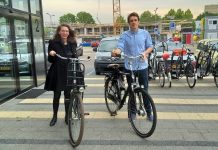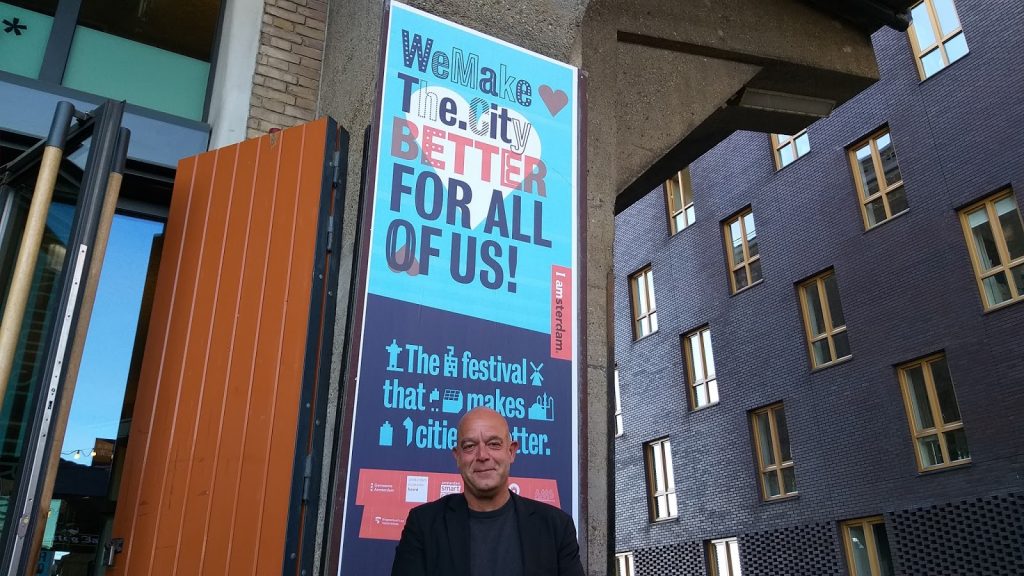
In Amsterdam, it’s not just the City government, big companies and universities that are responsible for innovation, but also the smaller institutions and businesses, the social entrepreneurs, the neighborhood communities, and the bottom up movements of citizens who drive change. People in the city, collectively make the city in the most literal sense of the words. This creates a unique ecosystem of social and technological innovation characterized by inclusiveness and creativity.
Amsterdam’s Pakhuis de Zwijger was one of the partners who wrote the bid which won Amsterdam the Innovation Capital title. This unique cultural organization opened its doors in 2006 and has grown to be an independent platform for urban innovation, for and by the city of Amsterdam and its inhabitants. Pakhuis is a combination between a theater, creative industry and a place to ignite civic dialogue about important issues that should be discussed in society.
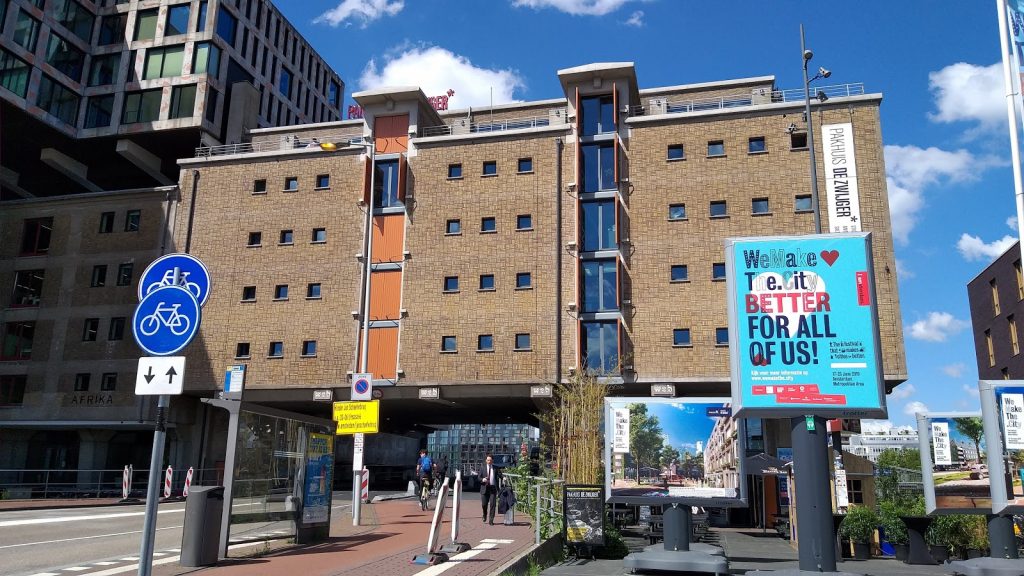
For the last two years, Pakhuis de Zwijger organized the WeMakeThe.City festival, inviting people to Amsterdam to hear and live the story of the Amsterdam Approach. WeMakeThe.City is considered to be the largest city festival in Europe that celebrates urban life and working on important urban questions like: “How do we make better cities?”.
With the occasion of the second edition of WeMakeThe.City Festival, which took place between 17th – 23rd of June 2019, I had the opportunity to meet and talk with Egbert Fransen, founder and director of Pakhuis de Zwijger.
Egbert, can you tell me a bit about you, your story, and why you founded Pakhuis de Zwijger?
Well, I did a lot of different things. I studied communications, and I worked for some years at KPMG, a consultancy firm. And after that, I started my own company, it was the combination of things in the domain of arts and culture on one side, and on the other side, it was about changes in big companies.
While having my company, I was also director of a big theater festival, in the North of Amsterdam. After doing more commercial, big projects for different companies, and at the same time arts and culture projects, I decided I wanted my own space in the city.
At that time, there was nothing here at Pakhuis, really nothing, it was only sand. And there was almost nothing between here and Central Station. It was really one flat place, a part of the old harbor, and some of the old warehouses were still there. The city was looking for somebody who had some ideas for transforming this place into a cultural space. So I said, “Okay, I will do this.” It took me quite a lot of years to transform it. But, I did. In 2006, we opened this building, with a new interior, with a new vibe, with new ideas.
We have now been here for 13 years, and built a platform in the city to address its urban challenges. I think we are the only one in Amsterdam, in the Netherlands, and actually I’ve never seen a place like this in the world. Yes, there are places that are centered around design, or architecture, or other issues, but not the way we are doing it. Because we are really working with the issues, the challenges of the city, the people in the city, their needs, their daily life in cities, and we are working to develop solutions and ideas.
We’re focusing on the urban daily life of people working, living and entertaining in the city. And, we’re making a lot of programs, about 600 a year, within a broad palette of issues. It’s about mobility, it’s about smart digital, it’s about circularity, it’s about education in the city, and what kind of work are we doing in the future in cities. But it’s also about loneliness, debts of the people who cannot afford to pay for their house anymore, it’s about area development, it’s about almost everything.
What we strive to do is to look from the perspective of the people who are living in this city. In the institutional world, in a municipality, things are usually looked at in silos, but we, as people living in cities, are not operating from silos. It’s our life. We are doing everything at the same time and meeting all of these issues together. We bring in a lot of people discuss, present, share, and co-create, etc., around all these issues.
In addition, we are not only staying here, but we’re also going out into the City as well, and doing all kinds of things. We now have two other small places in the city, in completely different neighborhoods, because the people who are living there were not coming to the center. So we’ve decided we will go to them. Here in the central building, we’re looking at the whole city, we’re looking at the region, we’re looking at what’s going on in our country. But going into those two neighborhoods we are really connected to what’s going on there, with the children, with the elderly, with the disabled people, and with the local economy.
We are looking at neighborhood economies as well as what is happening with the harbour. The biggest concern is fossil fuel energy, and the goal is to turn it into a circular harbor. Together with the city, we are bringing people in from other cities to discuss the idea of the circular harbour.
How come the city administration doesn’t do that for themselves?
Well, sometimes they do, but they are not so good in it, especially in relation to really doing things together, because they are top down orientated. The thing is, after working as Pakhuis for so many years, we know almost everybody in the city, and we know a lot of people at the municipality. But, we also know a lot of designers, we know a lot of people, researchers and scientists, we know a lot of artists, etc. We’re quite specialized in organizing the dialogue, and bringing people together and exchanging experiences, etc.
What is the link between Pakhuis and the WeMakeThe.City festival?
The link between Pakhuis and the festival is that in 2016 we applied for a challenge in Brussels and the city of Amsterdam won the iCapital award (innovation capital of Europe). We were one of the partners to write that bid, and we won that award because we described the innovation ecosystem in our city. We described what we were doing every day, and that’s the story of what we called the “Amsterdam Approach”.
The Board of the city has members in the municipality, the big organizations, the big corporates, and the knowledge institutions. Those three big institutional parties are called the “triple helix” and they really believe that with those three stakeholder groups, they are running the city, and are responsible for innovation. We don’t believe those three parties are only responsible for innovation. Not on their own. So, we decided to bring in other parties: the smaller businesses, the startups, the social entrepreneurs, the NGO’s, the healthcare, the schools and the bottom up movement of citizens, with neighborhood communities, etc. We brought in another triple helix and said, “This is the way we are going to innovate in the city.”
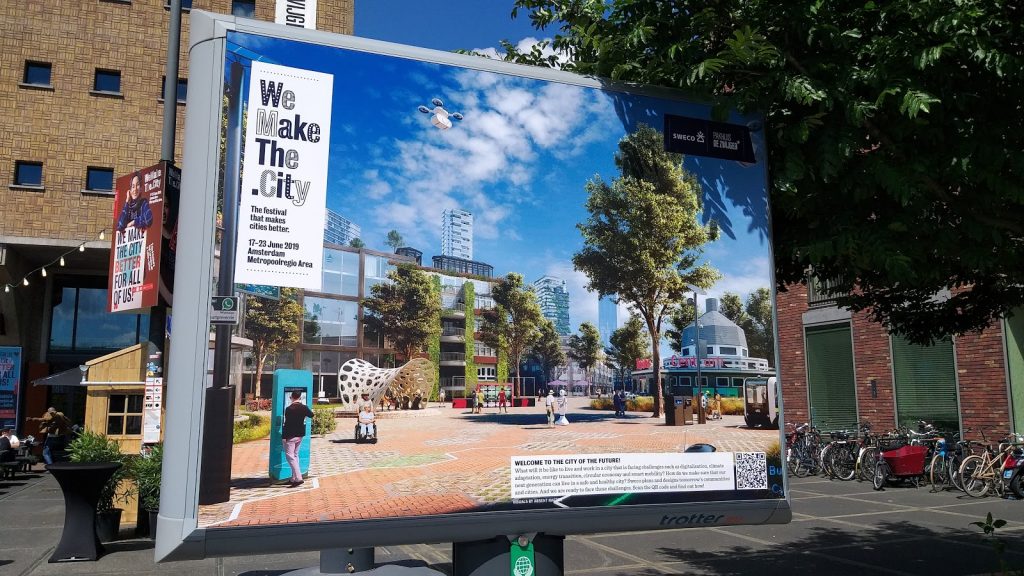
By bringing all the related stakeholders, six stakeholder groups, you will find sustainable solutions. The municipality and the Board of the city are really slow, but it’s changing, and they are now connected to this double triple helix and the Amsterdam Approach.
So, we had a good story in Brussels. We won the award. And of course, after you win an award, you are asked to talk about it in all kinds of conferences throughout Europe. We were asked to tell the story about the Amsterdam Approach and so we did. But after one and a half years, we said, “Okay, it’s nice to go out but, maybe we should invite people to Amsterdam.” And that’s why we started the festival in 2018: to tell the story of how you work together, how you relate to each other, how you come to solutions in another way rather than only top down. How do you really connect to the people who are living in the cities, who are entrepreneurs in the city and who are living a more sustainable connection and ownership.
Scientists have their research. Business are always money driven, and the politicians are concerned about the way politics will move the next four years. But the people who are living in neighborhoods, will be there for five or 10 or 15 or even 30 years. So you really need to bring all those stakeholders together. And that’s that’s the story which we tried to tell for the second year at the festival.
Where do you see the impact of your work? Can you measure it?
Yes, we can see differences. For instance, we’re now having a new coalition of politics in the city, so there’s a new Board of the of the city. They wrote their ambitions down and had a manifesto to start a new four year period. And a lot of things, really a lot of things in there are things that we discussed. I won’t say it’s our paper, no, that would be too arrogant, but we are quite good in agenda setting and putting things on in the minds of people and trying to rethink and redo things it another way.
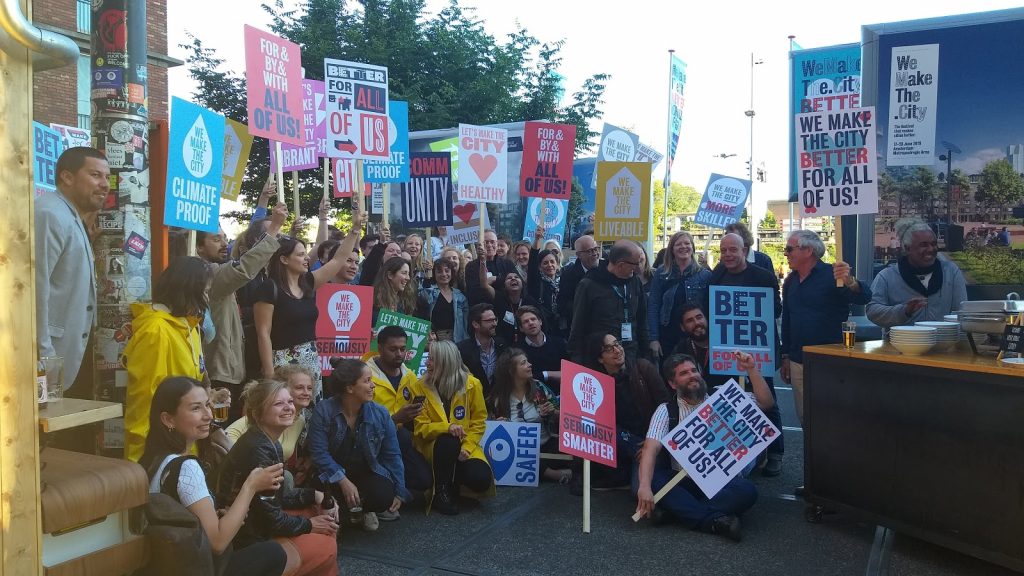
So there is impact and the impact is coming out of bringing so many people together and organizing our events in a way that you have to meet the other people. We organize the exchange of experiences and knowledge, we bring in the research institutes, we bring in the people out of the of the city hall. That’s where the impact is coming from, because otherwise they would not have met. The impact is that we make things visible, we connect people, we share, we inspire and inform them and make all kinds of cross links.
And what about the impact you have beyond the city, in other countries especially?
A lot of people like us, really like what we do. It’s interesting to see that in the Netherlands there are some little copies of what we are doing, but also in Vienna for instance. So it’s related to what we are doing and they were inspired. There was a big delegation from Helsinki also, they really want to have a Pakhuis in Helsinki, and they decided that there will be, for the first time, a small WeMakeThe.City in Helsinki in November this year.
A lot of people recognize that they don’t have a place like ours in their city. There are not so many places in other cities which have constant programmes as we do, not once a week, or once every two weeks, but every day, to constantly update and address the things that are really happening today. At Pakhuis, the program is every day, Monday, Tuesday, Wednesday, Thursday, Friday, and every night there are three events in the building that are all related to the city. Sometimes interesting and relevant foreign professors come to Amsterdam and they are then invited to have a public podium.
And which is the Pakhuis’s business model?
We are mostly independent, a big part of the money is earned by ourselves by running a restaurant for instance, but also renting the rooms in the building. Our own programming is at evening time, not during daytime, everything we do as an organization is at evening time. The rooms we offer for commercial prices during daytime, to organize all kinds of events, conferences, congress presentations, book launches, etc. So people pay to use it, and sometimes pay us to organize it.
We also have assignments, so the municipality is not subsidizing us, but is giving projects. If they need a program about, for example, loneliness in the city, they give us an assignment for one or two years to build a program.
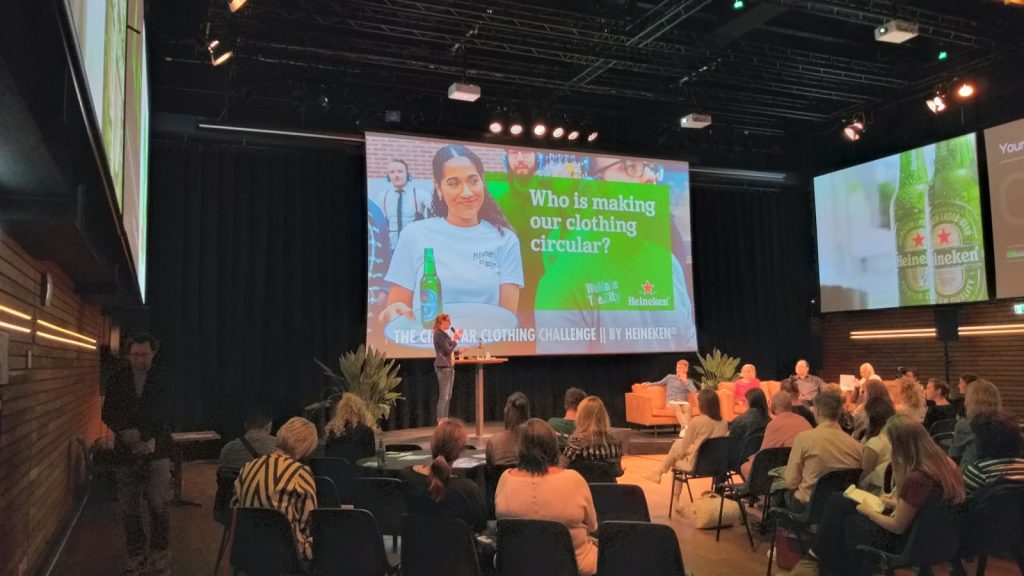
We also have other partnerships. There are about 20 corporate organizations, and the Port of Amsterdam, the railway, and the waste company, who are bringing some money to address some of the issues. By doing so they become stakeholders. They are not telling us what to do but, they really like to have a program line about waste in the city, or a program line about the transformation of the harbour, or a program line about house building in the city.
Our business case is around making events, organizing, communicating, and what we do is build communities.
How do you involve startups in what you do, how do you impact the startup ecosystem?
Of course, startups are coming in, fashion startups, technology startups, for instance, with the issue of loneliness, because there are a lot of technology and digital tools to relate to loneliness, healthcare related technology, etc. So the startups are coming in related to the issues, related to the needs of people, related to economics, but we don’t have really have focused startup programs. We’re not another startup hub, or a startup accelerator. But, we bring them in depending on the various issues.. So if it’s about mobility, about electric mobility, about mobility as service, of course, there are a lot of startups around that topic.
Finally, please tell me what are your future projects and plans
One of the plans is to go more into the neighborhoods, that’s really what we’re going to do in the coming years.
Our other focus is on education. We’re really working on a program for youngsters for children between 8 -12 and 12-14. I really like to work with youngsters, because I think they need to know how a city is working. There are almost no children who know how cities work. Where’s the food coming from? Where’s the electricity coming from? Where is the water coming from? How does it work in a city when new buildings are built? Who is building the buildings? Who owns the buildings? What about data in the city, they don’t know anything about it. And now we’re developing programs around this.
And then, we want to continue with the festival, doing better things here, but also going outside, in other cities.

